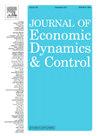父母在整个生命周期中的收入差距:孩子、工作和劳动力供应
IF 2.3
3区 经济学
Q2 ECONOMICS
引用次数: 0
摘要
女性比男性挣得少,与父亲相比,母亲尤其如此。这种差距的扩大主要发生在家庭组建之后,因为母亲们减少了工作时间。但当孩子们长大了怎么办?为了回答这个问题,我们估计了三种收入差距:“做母亲的惩罚”、“做女性的代价”和“做父亲的溢价”。这三者加在一起就产生了“父母性别差距”,即父母之间的收入差异。我们使用NLSY79和lehd人口普查的纵向数据来估计1960年左右出生的大学毕业生的收入差距(对数),这些数据跟踪调查了20多岁到50多岁的受访者。随着孩子的成长和女性工作时间的延长,母性的惩罚大大减少了。但女性,尤其是母亲,似乎愿意在整个职业生涯中用较低的工资来换取各种便利,比如在管理制度不那么惩罚职业中断或工作时间较短的公司工作。然而,随着孩子年龄的增长,父亲们设法扩大了他们的相对收入增长,尤其是那些从事时间密集型工作的父亲,无论工作时间长短或公司固定的影响如何。在整个家庭生命周期中,父母在收入方面的性别差距仍然很大。本文章由计算机程序翻译,如有差异,请以英文原文为准。
The parental pay gap over the life cycle: Children, jobs, and labor supply
Women earn less than men, and that is especially true of mothers relative to fathers. Much of the widening occurs after family formation when mothers reduce their hours of work. But what happens when the kids grow up? To answer that question, we estimate three earning gaps: the “motherhood penalty,” the “price of being female,” and the “fatherhood premium.” When added together these three produce the “parental gender gap,” defined as the difference in earnings between mothers and fathers. We estimate (log) earnings gaps for college graduates born around 1960 using longitudinal data from the NLSY79 and from the LEHD-Census that track respondents from their twenties to their fifties. As the children grow up and as women work more hours, the motherhood penalty is greatly reduced. But women, especially mothers, seem willing throughout their working lives to trade lower pay for various amenities, such as working in firms with management practices that are less penalizing of career interruptions or of shorter work schedules. Fathers, however, manage to expand their relative earnings gains as their children age, particularly among those working in time-intensive jobs, irrespective of work hours or firm fixed effects. The parental gender gap in earnings remains substantial over the family lifecycle.
求助全文
通过发布文献求助,成功后即可免费获取论文全文。
去求助
来源期刊

Journal of Economic Dynamics & Control
ECONOMICS-
CiteScore
3.10
自引率
10.50%
发文量
199
期刊介绍:
The journal provides an outlet for publication of research concerning all theoretical and empirical aspects of economic dynamics and control as well as the development and use of computational methods in economics and finance. Contributions regarding computational methods may include, but are not restricted to, artificial intelligence, databases, decision support systems, genetic algorithms, modelling languages, neural networks, numerical algorithms for optimization, control and equilibria, parallel computing and qualitative reasoning.
 求助内容:
求助内容: 应助结果提醒方式:
应助结果提醒方式:


